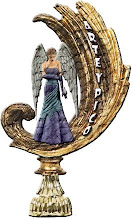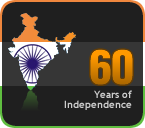ALSO KNOWN AS BOMMAI KOLU. . . .

Maiji's Kolu in 1978
. . . .is enjoyed by women and girls all over South India. Now is the time of the year to celebrate the
bommai kolu (dolls arrangement). I went to see the
bommais (dolls)
on sale near Sri Kapali Temple, and was happy to see so many of them.
 Click on the picture for an enlarged view
Click on the picture for an enlarged viewMy first recollection of this nine-day festival is that a
kolu would appear overnight in our pooja room like magic. Arranged on nine steps covered with a white cloth, the images of all the gods and goddesses, along with the family’s collection of curios, arranged artistically under a canopy of white cloth, edged with red and green frilled border, and decorated with rainbow coloured paper garlands, it would seem to us children like a magic show.
In a single night after we children were sent to bed, my mother with the help of my elder brother and sisters would have the show ready. For the rest of the 355 days these dolls and everything else were stored in my mother’s tallboys in my mother’s store room. During Navarathri in the evenings, my sister and I, dressed in our best
pavadai uduppu (long skirt and blouse) were sent to neigbouring houses to invite the womenfolk there to visit our
kolu and accept
manjal kumkumam (auspicious objects). In the homes where they had also arranged
kolu, we would be welcomed, seated on a
pattupai,(silken mat) asked to sing a song, and finally treated to the
sundal and any sweet prepared as
neivedhiyam (sacred offering to the gods), along with
vetrilai pakku (betel leaves and nuts), coconuts, and blouse pieces as gifts. We used to feel like VIP s, when we returned home with our loot. All the while my mother too would be doing the same to visitors at our homes who would have come to invite us. Those ten days were really fun for me and I enjoyed them thoroughly.
When I got married and set up my own home in Delhi, I was astonished to find that
kolu was non-existent in the north. Very few families belonging to the south, about four or five had
kolu. When my eldest daughter was one year old, I started the
kolu with a handful of
bommais, typical Delhi made ones – I thus introduced the festival of
kolu to my neighbours. These dolls were sold in readiness for Diwali festival pooja, performed to welcome prosperity.
My first
kolu was a very small one with just two steps, two feet long and one foot wide. I enjoyed this, and my husband also encouraged me no end. From that
kolu, in a period of twenty years, my
kolu grew in size and shape, decorated with all the frills my mother had, and also admired by one and all. I am not boasting, but my
kolus were well appreciated, and I enjoyed readying them.
Come September, I would start planning for
kolu. Apart from the seven steps, I enjoyed having some side shows on the floor, all prepared and made at home with the help of my children. One year it would be a small town with a temple with four towers in the centre, small shops selling things one sees in the towns, around the temple walls; small lanes with bullock carts. Sometimes it would be a hill temple with fields around, and the rich crop nodding their heads, (the crops were grown using fenugreek seeds) and a park with children playing.
One year in Pondicherry I made a model of the whole length of Rajpath of New Delhi, from the Secretariat to Indian Gate, with the lawns, the fountains, and all the buildings including the Parliament House. Everything was hand made with cardboard. Another year it was the seafront of Pondicherry with the sea and the waves, and the buildings on the seashore. Another year I made the map of India, marked the main cities with important buildings, and people dressed in the costumes of the regions.
After coming back to Delhi, I created theme-based sideshows like the Fairy Tales and Nursery Rhymes.
A week before
kolu started I would be ready with my plans and start to prepare the hills, the fields and parks with loose earth carried in from outside by the bucketful. The mud was moulded by hand into various objects like walls, shops, huts, with windows and doors. Ice cream cups painted red were used as pots for plants and shrubs. My father-in-law took pleasure in teasing me that the whole room was now a dump. At the same time he would be the first to admire all the handiwork I had done. And gradually we had collected a large number of bommais, all big and small from Trichy, Chingleput and Pondicherry, including the famous Bunrutti bommais.
Yesterday at the shops I found that everything I made then was available readymade – including plots of grass!
My centerpiece was a Lakshmi, about a foot tall, sitting on a lotus flower, six inches high and size of a dinner plate. Two elephants, big, white ones stood on either side of the Goddess with a garland each held in its trunk.
My last
kolu was in 1978 in Delhi. Somehow with elders no more, and the older children leaving home, and us moving to a smaller house dampened my enthusiasm. My only regret now is I never thought of taking any photos of the
kolu in Pondicherry – they were worth it. My consolation is that my last
Kolu in 1979 was photographed and published in the Indian Express newspaper of New Delhi. The
kolu had fewer dolls that year, only those that had escaped an attack by white ants, caused by a leaking pipe in the storeroom. I managed to salvage many by repainting and touching them up.
At the
kolu in Trichy, with newly bought bommais, I had also made a park with a pond in which fish and swans were swimming and a stork waiting on the edge, as though ready to catch a fish. My first guest was the Collector’s wife. We were meeting for the first time, and both were nervous to start the conversation. Finally she asked me “Do you have a cook?” The question was put in Tamil with only the word cook in English. Before I could say No. my four year old, Viji, came out saying, “Yes, we have one, standing on one leg!” and pointed to the stork. Poor girl – she thought our visitor was asking for a stork. In Tamil the word for stork is ‘kokku’ which sounds like ‘cook’. Anyway that broke the ice and conversation flowed easily.
Now all my dolls are decorating the
kolus of my friends and relatives, to whom I gave them away. Only two dolls, a Lakshmi and a Saraswathi, more than 50 years old, remain at Raji’s place – a reminder of the days gone by.








